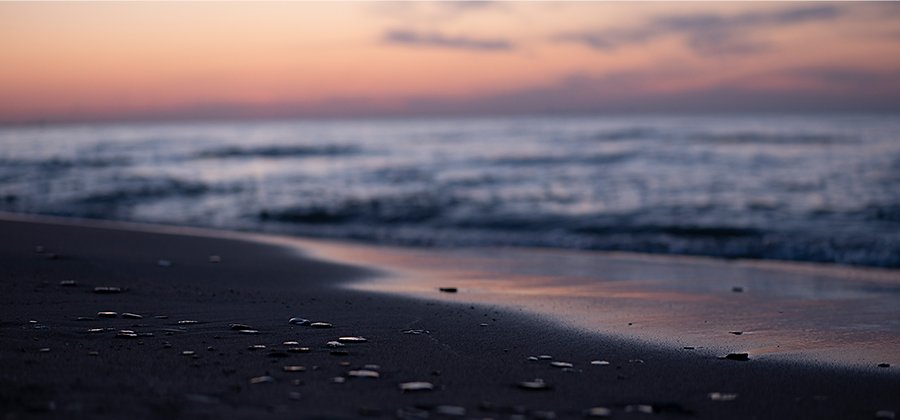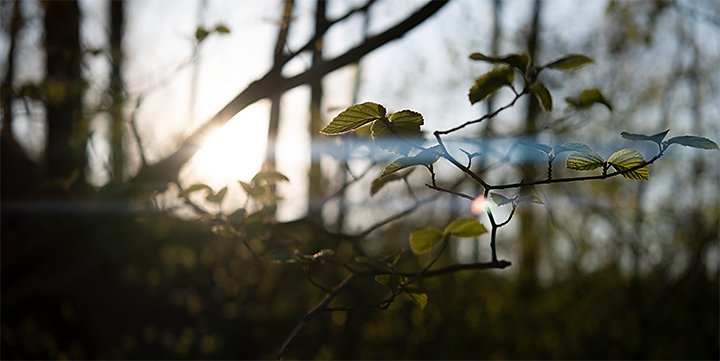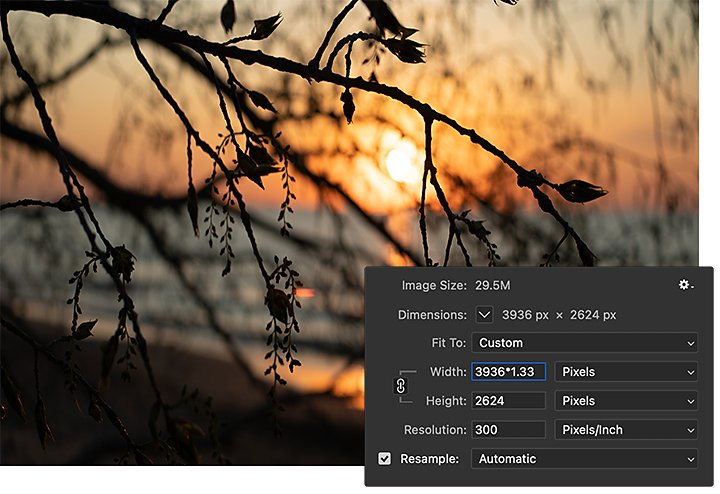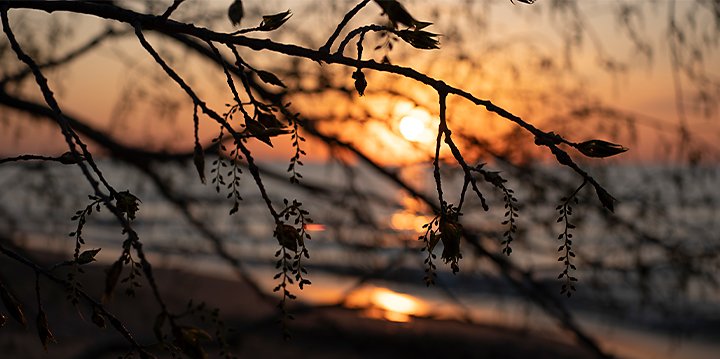Captura instantáneas con un estilo cinematográfico gracias a la fotografía anamórfica.
Descubre cómo dotar a tu próximo proyecto fotográfico de una apariencia cinematográfica y panorámica con la ayuda de los objetivos anamórficos.

Imagen de Shane Dresch
Desde imágenes en gran angular hasta de formato completo.
Los objetivos anamórficos pueden hacer que tus fotos se muestren imponentes, desde impresionantes retratos hasta primeros planos de plantas, pasando por instantáneas espontáneas que amplifican el encanto de las tareas cotidianas.
Los objetivos anamórficos comprimen las imágenes en horizontal para captar un campo de visión ampliado artificialmente con un sensor estándar de 4:3. Este proceso, denominado “reescalado”, crea una relación de aspecto más amplia en posproducción sin un objetivo de gran angular. Al principio, cuando el cine estaba dando sus primeros pasos, los directores de fotografía usaban objetivos anamórficos para mostrar una escena extensa con una profundidad de campo baja a fin de enfocar los sujetos dentro de su obra, gracias a lo cual conferían una sensación cinematográfica con la intimidad de un retrato.
“Cuando las películas se emitían por televisión, estaban en formato 4:3 con buzón —explica la videógrafa Margaret Kurniawan—. Querían que tuvieran una apariencia distinta, y ahí fue donde entraron los objetivos anamórficos”.
En aquella época, una técnica llamada CinemaScope ayudó a materializar el efecto de gran pantalla. A diferencia de la forma más circular de los objetivos convencionales, los objetivos anamórficos oblongos permitían a los primeros cineastas crear la ilusión de que el campo de visión era más amplio. Posteriormente, comprimían el metraje en una tira de película estrecha, que luego el proyector volvía a estirar para crear una imagen en gran pantalla.
“Tomaba la imagen en 4:3 y la ensanchaba —comenta el fotógrafo Shane Dresch—. Le daba una perspectiva nueva y de mayor amplitud”.

Saca instantáneas de los sujetos y el entorno con una amplia relación de aspecto.
A medida que la industria del cine fue adoptando de forma más generalizada los objetivos anamórficos, acabaron cruzando la frontera que los separaba de la fotografía cinematográfica tradicional. Y ahora puedes usar objetivos anamórficos con una cámara DSLR o sin espejo, e incluso con la cámara de un iPhone u otro dispositivo móvil.
Gracias a su forma ovalada, los objetivos anamórficos captan una imagen mayor que los objetivos circulares o esféricos. Su forma más amplia y oblonga te permite generar un bokeh más difuminado alrededor del sujeto. “Cuando lo haces con un objetivo anamórfico, el bokeh es ovalado —afirma Kurniawan—. Le confiere al elemento desenfocado un aspecto único”. Este amplio campo de visión (que se correlaciona directamente con la forma ovalada del objetivo) te ayuda a captar una mayor parte del espacio que rodea a tu sujeto, por lo que debes seleccionar con cuidado dónde y cuándo fotografías con objetivos anamórficos.
Hay determinados tipos de fotografía (como es el caso de un retrato impresionante) que funcionan bien con este formato. Puedes usar la poca profundidad de campo en el centro del encuadre para capturar a tu sujeto, al tiempo que consigues una visión amplia y deslumbrante de la ciudad y de la calle para plasmar el carácter del lugar donde vive.
Cómo pueden los objetivos anamórficos conferir dramatismo a tus instantáneas.
Si quieres lograr la mejor impresión a lo J. J. Abrams, saca las fotos con un objetivo anamórfico. De este modo, no solo conseguirás un amplio campo de visión que darán la impresión de que tus instantáneas proceden de una película, sino que también podrás plasmar un efecto de destello de lente horizontal (una de las señas de identidad en las producciones de Abrams).
El destello de lente se produce cuando los rayos de luz procedentes de fuentes brillantes se reflejan contra la parte delantera del objetivo de la cámara. Puede tener dos efectos: bien que la luz se convierta en una neblina que cambie el contraste de la foto y le dé un aspecto más deslavazado, o bien que se perciba como un estallido estelar o una línea, el tamaño y la forma de los cuales vendrá determinado por la apertura y el objetivo de tu cámara.
Los destellos de lente pueden dar una sensación de autenticidad a las fotos al hacer que el espectador sea consciente de que lo que ve se fotografió a través de un objetivo. La forma oblonga del objetivo puede darle a tus imágenes un aspecto clásico y cinematográfico. “Trabaja un poco los bordes. Distorsiona un poquito los laterales, lo cual le da un aspecto retro” explica Kurniawan.
Con la fotografía anamórfica, los cambios de enfoque (un error de enfoque que puede difuminar partes de las imágenes) también adquieren un cierto toque espectacular. Dado que el campo de visión es mucho mayor que la media, resultan más llamativos que de normal, lo cual puede dar lugar a fabulosas fotos en perspectiva.

Imagen de Shane Dresch
Prácticas recomendadas para la fotografía anamórfica.
Cuando empiezas a sacar fotos anamórficas, tienes que decidir entre acoplar objetivos anamórficos directamente a la cámara o como adaptador sobre el objetivo de tu Sony, Nikon, o Canon. Para quienes tan solo deseen hacer sus pinitos con la fotografía anamórfica, alquilar este tipo de objetivos antes de decidirse a comprarlos es una forma excelentes de probarlos.
Si quieres disfrutar de espectaculares fotos anamórficas y cinematográficas sin cambiar el objetivo fijo de tu DSLR, tendrás que usar adaptadores. Ofrecen una forma accesible de empezar a sacar fotos anamórficas al instante.
Enfoca al sujeto con la cámara, acopla el objetivo anamórfico y vuelve a enfocarlo. La estabilidad es vital, así que utiliza un trípode para afianzar las fotos. Ahora que tu cámara pesa más, estabilizarla solo con las manos te resultará mucho más difícil.
El enfoque automático no funciona con los objetivos anamórficos, por lo que la paciencia y la práctica serán tus mejores maestros a la hora de clavar el enfoque manual. Aprende a ajustar manualmente el ISO, los parámetros de apertura y la distancia focal, entre otros ajustes, a base de ensayo y error (la configuración necesaria podrá variar según la circunstancia, ya que utilizar un objetivo anamórfico acoplado a un objetivo fijo requiere trastear un poco con los parámetros antes de cada foto).
Todos los efectos anamórficos se exagerarán al reescalar la imagen (un proceso que se lleva a cabo al editarla), así que procura tener en cuenta el resultado final al sacar la foto.

Imagen de Shane Dresch
Consejos para fotografiar con objetivos anamórficos.
Aquí tienes unos cuantos consejos de propina que te ayudarán a sacar instantáneas extensas de gran calidad.
Perfecciona tus habilidades: encontrarle el tranquillo a la fotografía anamórfica es fácil, pero dominarla ya es más complicado (no dejes de practicar).
Aprende a encuadrar las fotos anamórficas: equilibra la composición de tu instantánea con un sujeto en el encuadre. Convence a alguna de tus amistades o alguien de tu familia para que haga de conejillo de indias para tus experimentos anamórficos.
Ajusta la relación de aspecto: comprender la relación de aspecto es una buena habilidad que te ayudará con las fotos anamórficas. Estos conocimientos serán fundamentales para reescalar las instantáneas a una relación de aspecto más amplia cuando las edites.
Dale un aire cinematográfico a la fotografía con Adobe Photoshop.
Cuando hayas terminado de sacar fotos, ajusta las imágenes a una relación de aspecto más amplia reescalándolas en Photoshop.

Imagen de Shane Dresch
1. Abre la foto.
2. Haz clic en la barra de configuración y selecciona Tamaño de imagen.
3. Cambia la relación de aspecto con la herramienta Restringir proporciones.
4. Multiplica la altura o la anchura de tu foto por 1:33 (formato estándar), en función de si esta está en horizontal o en vertical.
5. Haz clic en Aceptar y se reescalará la imagen.

Imagen de Shane Dresch
Cuando las hayas reescalado, pasa las fotos anamórficas a Adobe Photoshop Lightroom para perfeccionar la elegancia hollywoodiense de tus imágenes con características tales como Reducción de ruido y Borrar neblina. Dado que puedes empezar a editar en el escritorio y, luego, llevarte las modificaciones contigo mediante un dispositivo móvil con almacenamiento en la nube, la sala de montaje puede acompañarte adondequiera que vayas para perfeccionar tus fotos épicas.
Colaboradores
Saca más partido a Adobe Photoshop Lightroom
Edita fotos cómodamente con ajustes predefinidos de Lightroom, Súper Resolución, comparte fotos con facilidad desde cualquier dispositivo y accede a tus proyectos desde cualquier parte con la gestión del almacenamiento de fotos en la nube.
Puede que también estés interesado en…
Entiende para qué sirve una profundidad de campo baja.
Descubre cómo una profundidad de campo baja puede agregar dimensión a tus fotografías.
Introducción a la distancia focal.
Descubre formas de seleccionar la distancia focal ideal para todas y cada una de tus fotos.
The basics of photography composition.
Composition is all-important for photographers. Learn more with these tips from the pros.
Adéntrate en un nuevo mundo y haz que los sujetos pequeños sean más llamativos con estos consejos de fotografía macro.



